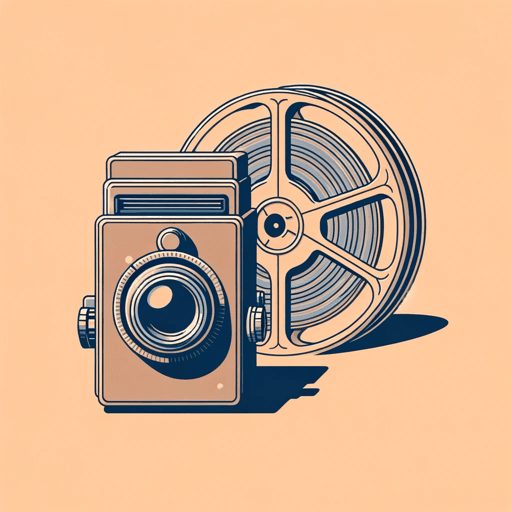30 pages • 1 hour read
Walter BenjaminThe Work of Art in the Age of Mechanical Reproduction
Nonfiction | Essay / Speech | Adult | Published in 1935A modern alternative to SparkNotes and CliffsNotes, SuperSummary offers high-quality Study Guides with detailed chapter summaries and analysis of major themes, characters, and more.
Summary and Study Guide
Summary: “The Work of Art in the Age of Mechanical Reproduction”
The essay “The Work of Art in the Age of Mechanical Reproduction” was written by Walter Benjamin and its first edition was published in German in 1935. Born in Berlin in 1892, Benjamin was a Marxist cultural critic and philosopher best known for his contributions to literary theory, translation theory, and historical analysis. This essay is part of series of works by Benjamin on the relationships between art, culture, and politics, which were collected and edited after his death by his colleague Hannah Arendt in the text Illuminations. Written in Paris after fleeing Nazi Germany, the essay explores themes like Technology and Artistic Production, Depictions of Reality in Art, and Art as a Political Form.
This study guide refers to the translation by Harry Zohn of the 1939 German revised edition, Das Kunstwerk im Zeitalter seiner technischen Reproduzierbarkeit, found in Illuminations, first published in New York by Schocken Books in 1969. The pagination here comes from the 2007 paperback edition published by Schocken Books.
Content Warning: The source material refers to Fascist violence. This study guide references suicide, the Shoah, and antisemitism.
Benjamin opens his essay by stating his purpose in the text: to set out a series of concepts about the theory of art that will be “useful for the formulation of revolutionary demands in the politics of art” (218). Benjamin states that he will base his discussion not on classical Marxist predictions about how art will be made, but rather on how it is being made at the time of his writing. He asserts that typical modes of assessing artwork, such as “creativity and genius” (218), lend themselves to a Fascist interpretation of artwork. He wishes to indicate a series of concepts for evaluating art that are anti-Fascist.
Subsequently, Benjamin outlines a history of the production of art and its reproducibility. He includes discussions of historical and largely obsolete art forms, such as woodcuts and ancient Greek statues like that of Venus. He contrasts these art forms and their relatively limited (or impossible) reproducibility with the consummately modern art forms of photography and film, which are highly reproducible. Benjamin describes how these antique art forms were part of “ritual” (223), like Catholic imagery, noting for example that “certain statues of gods are accessible only to the priest in the cella” (225). In contrast, Benjamin describes modern, reproducible art forms as being “emancipate[d]” from ritual and instead “based on another practice—politics” (224).
At the halfway point in the essay, Benjamin discusses the art forms of photography and film and how they might be evaluated as complete transformations of “the entire nature of art” (227). In particular, Benjamin is interested in how film completely changes the way the audience looks at and evaluates art in general. He uses the term aura to discuss the authenticity, distance between viewer and object, and historicity of a work of art. Benjamin argues that reproducible modern art forms completely sever the work of art and its viewers from its aura. For example, an actor portraying Macbeth onscreen is physically and temporally separated from their audience and therefore “the aura that envelops the actor vanishes, and with it the aura of the figure he portrays” (229). The film actor has essentially become a stage prop, rather than an embodiment of a figure.
The author then explores the political implications of the destruction of this aura. He notes that “mechanical reproduction of art changes the reactions of the masses toward art” (234). Whereas irreproducible paintings could only be viewed in a gallery by some, films can be viewed by the masses. This changes the way that people critique and enjoy works of art. Because anyone can see a film, anyone can feel themselves to be an expert in film or believe they might be in a film. Further, because the work no longer has an aura and the technology permits wide reception and engagement, film and photography allow the masses a close analysis of optics that was not possible with earlier art forms. However, this analysis is limited because the reality presented by film and photography is so completely permeated “with mechanical equipment” that it appears to be “free of all equipment” (234). The viewer does not see what is left on the cutting room floor and instead takes the image generated to be a true vision of reality, completely divorced from the labor of production.
In the Epilogue, Benjamin writes explicitly about the implications of the way the camera and particularly film has changed the way the masses see the world and how it relates to Fascist politics. He notes that “the logical result of Fascism is the introduction of aesthetics into political life” (241) and that the endpoint of a completely aestheticized politics is war. He quotes the Italian Proto-Fascist Filippo Marinetti as saying, “war is beautiful” (241). Because what is portrayed in an image generated by mechanical technology is seen as both artistic and real, an image of a war, for example, is accepted as “beautiful” because its production—death and destruction—has been forgotten just as the film on the cutting room floor. In the final paragraph, Benjamin pushes back against this nihilistic form of “art for art’s sake” with a rejoinder that “Communism responds by politicizing art” (242).


